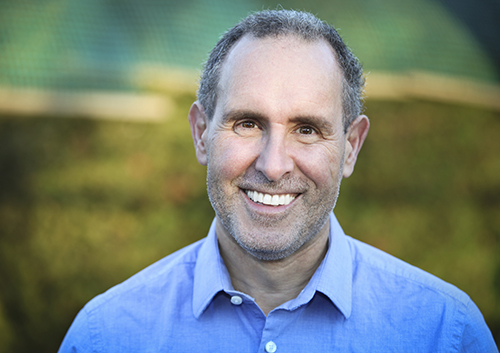Things You Should Know Before Getting an Oral Piercing
March 12th, 2025

Have you been thinking about getting an oral piercing lately? It could seem enticing because they look trendy or cool, but it’s worth know the health risks associated with oral piercing. Even if you already have one, you may learn a few things you didn’t know.
The human mouth contains millions of bacteria. Even without piercings, it’s not uncommon for people to develop an infection every once in a while. By adding an oral piercing, you increase your likelihood of getting an infection.
Many people who have piercings tend to develop the habit of touching them regularly, which is the like opening a door and yelling, “Welcome home, infections!” And because these piercings are in your mouth, particles of all the food that comes through can accumulate and eventually cause a pretty serious health situation.
It’s hard to ignore the presence of an oral piercing, so biting or playing with the site is fairly common. Doing so can lead to teeth fractures, however. While a fracture might be on the enamel of a tooth and require a simple filling, it can also go deeper, which could entail a root canal or even tooth extraction.
Other risks include hindering your ability to talk and eat, nerve damage, gum damage, and even loss of taste.
If you’re still determined to get an oral piercing, at least be aware of the time it will take to heal. It can take anywhere from four to six weeks, and can cause great discomfort during that time. Be willing to give it that time in order to lower your chances of infection.
Make sure you understand that getting an oral piercing will involve adding further responsibility to your daily dental health duties. It’s essential that you commit to regular upkeep on your end, and not just while it’s healing.
Antibiotic Prophylaxis or Premedication
March 5th, 2025

In years past, it was often recommended that dental patients who had a history of heart problems or other conditions, such as joint implants, be given antibiotics before any dental work. This pre-treatment is called prophylaxis, based on the Greek words for “protecting beforehand.” Why would Drs. Angela Paros, Amer Atassi, Eric Young, Alexander Katsnelson suggest this protection? It has to do with possible effects of oral bacteria on the rest of the body.
Our bodies are home to bacteria which are common in our mouths, but which can be dangerous elsewhere. If these oral bacteria get into the bloodstream, they can collect around the heart valve, the heart lining, or blood vessels. A rare, but often extremely serious, infection called infective endocarditis can result.
It is no longer recommended that every patient with a heart condition take antibiotics before dental procedures. Doctors worry about adverse effects from antibiotics or, more generally, that an overuse of antibiotics in the general population will lead to more strains of antibiotic-resistant bacteria.
There are some patients, however, who are at a higher risk of developing infective endocarditis, and who should always use preventative antibiotics. Generally, premedication is advised if you have one of these risk factors:
- A history of infective endocarditis
- Certain congenital heart conditions (heart conditions present since birth)
- An artificial heart valve
- A heart transplant
Your cardiologist will know if prophylaxis is advisable, and if you are taking any drugs which could interact with antibiotics. Always talk to your doctor about any dental procedures you are planning, particularly if they are invasive procedures such as gum surgery or extractions.
If you believe you would benefit from antibiotics before dental treatment at our Romeoville, IL office, the most important first step is to talk with your doctors. We are trained to know which pre-existing health conditions call for prophylaxis, which dental procedures require them, which antibiotics to use, and when to take them. Tell us about any health conditions you have, especially cardiac or vascular issues, and any medication allergies. Working with you and your doctor to protect your health is our first priority, and having a complete picture of your medical health will let us know if antibiotic prophylaxis is right for you.
When to Begin Dental Care for Your Child
February 26th, 2025

Children’s oral health differs from that of adults in a variety of ways. Drs. Angela Paros, Amer Atassi, Eric Young, Alexander Katsnelson and our team want you to understand how you can provide the best care for your son or daughter’s teeth. It’s essential to understand what your child will need from you when it comes to his or her oral health in those first few years.
In-home dental care begins when your baby starts to show signs of developing the first tooth. We recommend that you bring your child to our Romeoville, IL office between the ages of one and two. Drs. Angela Paros, Amer Atassi, Eric Young, Alexander Katsnelson will take a look at your child’s tooth development and gums during this first scheduled appointment.
The initial appointment with your little one is designed to get him or her accustomed to our office. We recommend allowing your child to be in the exam room alone with us during the first visit in order to become comfortable with our staff at an early age.
We will go over several general matters during your child’s first visit:
- Look for signs of decay or other tooth or gum problems
- Make sure your youngster doesn’t have gum disease or cavities
- Examine your child’s bite, and check for misalignment that could lead to problems in the future
- Clean the teeth, and apply fluoride if your son or daughter is old enough
- Talk to you about proper oral health care for your
- Give you some tips for brushing and flossing your child’s teeth
- Answer any questions you may have about caring for your little one’s teeth
Once your child is old enough for his or her first visit to the dentist, you should begin to schedule regular cleanings every six months. If any problems arise before a scheduled appointment, call our Romeoville, IL location and we will be happy to answer any questions you may have.
Remember, creating healthy oral health habits with your child early on is crucial. We’re here to guide you through this process and make sure your child is healthy and happy.
Improve your oral health with xylitol!
February 19th, 2025

Xylitol tastes sweet, but unlike sugar, it is not converted to acid that can cause your teeth to decay. It’s a naturally occurring sweetener found in plants, fruits, and vegetables; even the human body produces it in small amounts. Xylitol is widely used in sugar-free chewing gum, mints, candies, and even certain forms of medicine.
The World Health Organization has approved xylitol because only a small amount is needed for its health benefits. It’s even safe for diabetics, with a glycemic index of only seven. Xylitol has 40% fewer calories than other types of carbs: less than three calories per gram.
So how can this natural sweetener benefit your oral health? Take a look at the facts. Tooth decay starts when bacteria consumes the sugars left in your mouth. When you eat sugary foods, the bacteria on your teeth will multiply and make acid that can destroy your enamel.
Xylitol is derived from fibrous parts of plants, so it does not break down like a regular sugar. It actually helps maintain a neutral pH level in the mouth, which in turn prevents bacteria from sticking to the teeth. The bacteria are then unable to digest xylitol, which means your teeth won’t develop enamel damage and cavities.
Studies have shown the consumption of xylitol as a sugar substitute or a dietary addition had a dramatic reduction in new cavities and even reversed existing cavities. These effects are long lasting: low cavity rates remained years after the trials were done.
When there’s less bacteria and acid in your mouth due to xylitol, your teeth stay healthier. The more frequently it’s ingested, the more you will prevent enamel damage.
Aim to consume around five grams a day, or one gram every three hours if possible. You can do this by consuming gum, tablets, candy, or mints that have xylitol as one of the first ingredients after your meals. You can find these products in health food stores and specialty grocery stores.
Since xylitol replaces sugar on a one-to-one ratio, it’s used in several common items:
- Toothpaste
- Mouth rinse
- Baby oral wipes, gel, and pacifiers
- Nasal wash
- Dry mouth spray
- Granulated forms for cooking
- Granulated packets to add to drinks
- Commercially prepared foods
Make sure to pick up items that contain xylitol the next time you’re at the store! This is an easy way to maintain great oral health. If you have specific questions about xylitol, ask Drs. Angela Paros, Amer Atassi, Eric Young, Alexander Katsnelson during your next appointment at our Romeoville, IL office.






